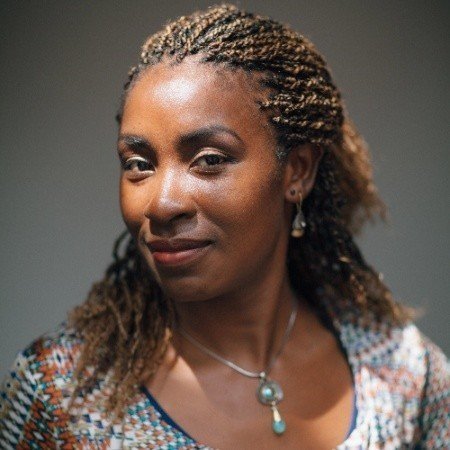What is Liberatory Design?
At first, you might be thinking, what does design have to do with liberation? You might feel a tinge of discomfort come over you, and a sigh of, “Is nothing safe from ‘wokeness’?” You’d be partially right. As our critical thought processes evolve, as binaries and ceilings become more expansive, we are forced to reckon with the pervasive, insidious nature of the oppressive, exploitative, white supremacist, capitalist, heteronormative, patriarchal structures we have all been indoctrinated into, voluntarily… and not.
“Liberatory Design is an approach to addressing equity challenges and change efforts in complex systems. [It is] is a riff on Stanford d.school’s design thinking process to promote equity in design work. This framework was co-created byTania Anaissie, Victor Cary, David Clifford, Tom Malarkey and Susie Wise during a collaboration in 2016/17 with the National Equity Project and d.school’s K12 Lab. The goal is to provide a design process that develops one’s self-awareness as an equity-centered designer.”
At every facet of design, we are faced with the presence of, and the potential for harm, inequity, and exclusion. In our Brave Spaces Roundtable podcast series on “The Fundamental Pillars of Successful DEI Practices” our guests, Olanike Ayomide-Mensah and Lia James talked at length and depth about their work establishing a seat at the table for themselves and others whose identities exist across multiple intersections of oppression, exclusion, and marginalization.
Designing for liberation takes the conversation a step further with a perspective shift that, albeit non-linear, seeks to establish from inception, a table that is not only built for, but with those who would have otherwise faced obstacles and inequities which hinder their access, or who have may have been altogether excluded for reasons beyond their control.
In her 2021, “A Design Thinker Reckons With Design Thinking“, Liberatory Design co-creator and this month’s Brave Spaces Roundtable podcast guest Tania Anaissie wrote: “Our field is at a moment of reckoning, the beginning of a new era, and we can either choose to maintain the status quo, harming the communities we seek to support, or we can transform our practice to align to liberation values.”
Many are unwilling, or averse to a shifting of paradigms that would make the perceptibly mundane and inanimate acceptably and legitimately political. The mere thought that the clothing we don each morning, the beauty products we use, the technology we rely on and so much more could contain multitudes of missed opportunities for equity and inclusivity, and further that they could perpetuate harm is a difficult reality to accept. Yet, these are the very things we can no longer ignore.
In her critique of Design Thinking, Anaissie carefully and compassionately called out a series of missed opportunities to curtail harm and/or power inequities at the design level. One of which is the popular e-cigarette brand, Juul. If you are not familiar with the company, Juul is a brand leader in e-cigarette products, or vaporizers designed to help adults quit smoking.
In the first half of 2019, the Wall Street Journal reported JUUL sold more than 12 million devices and 390 million refill pods in the U.S.
Korey Hale- Forbes
From the design thinking perspective of designing for “social change”, Juul’s designers, “two alumni of a renowned Silicon Valley design program” checked all of the right boxes. However, in designing a product “to, “limit the ‘offensiveness’ of traditional smoking for both the smoker and those around them,” they missed an integral segment of the population: teens.
According to the truth initiative, “The popularity of JUUL among youth has helped the product account for 73 percent of e-cigarette sales in the U.S., as of September 2018. Many are attributing the product’s rise to its sleek design that could be mistaken for a flash drive — which makes it easy to disguise and use discreetly — and availability of youth-appealing flavors.”
By not designing with attention to the highly addictive nature of nicotine and the understanding and awareness of the allure of a new and trendy, covert means of accessing nicotine for teens, or how the tobacco industry has long targeted and disproportionately affected “people in low-income communities, racial and ethnic minorities, LGBTQ individuals, women, youth, members of the military and those with mental illness…” they perpetuated further harm by contributing to a public health crisis.
This one example alone, paired with the disparities in access to adequate healthcare found in the same communities should have, and most certainly would have set off all kinds of alarms if only the right mix of voices and experiences were involved in the design process.
Without deep self and systems-awareness, we often reproduce the same systems of oppression regardless of our intent. -Tania Anaissie
Dr. Dede Testubayashi’s (Deh-deh Teh-tsu-bye-ya-she) expertise is DEI + product + business value and integrating them into a team and organization's best practices. She has extensive experience building frameworks and guidelines to integrate product inclusion into the development process, and driving adoption as an integral portion of phased and prioritized roadmaps for teams to execute against. Dede is a member of the Equity Army run by Annie Jean-Baptiste, a group focused on educating organizations on Product Inclusion. She's also a founding member of Tech Ladies, a group focused on inclusivity in tech, and is working on two new publications; a memoir and a product inclusion guide.


